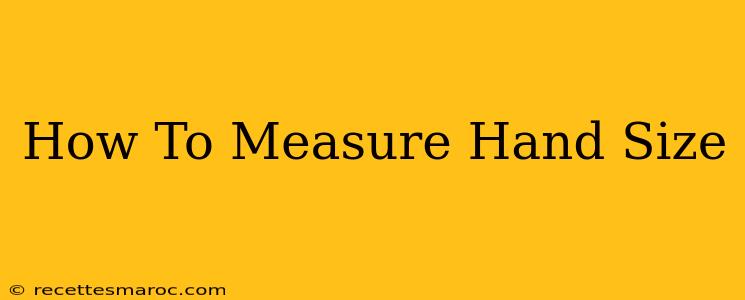Knowing your hand size can be surprisingly useful, whether you're shopping for gloves, choosing musical instruments, or even assessing your overall health. This comprehensive guide will walk you through different methods for accurately measuring your hand size, ensuring you get the right fit every time.
Why Measure Your Hand Size?
Accurately measuring your hand size is crucial for a variety of reasons:
-
Finding the Perfect Fit: This is perhaps the most common reason. Whether it's gloves, sports equipment, tools, or even jewelry, knowing your hand size ensures a comfortable and functional fit. Ill-fitting items can be uncomfortable and even hinder performance.
-
Musical Instrument Selection: For musicians, hand size directly impacts instrument choice and playing technique. A guitarist with small hands might find a larger guitar difficult to play, while a pianist with large hands might find a smaller keyboard restrictive.
-
Medical Assessments: In some cases, hand size can be a factor in medical assessments, particularly for children, indicating potential growth patterns or underlying health conditions. However, this should only be done and interpreted by a medical professional.
-
Ergonomics and Workplace Safety: In certain professions, hand size impacts the selection of appropriate tools and equipment, contributing to better ergonomics and safety in the workplace.
Methods for Measuring Hand Size
There are several ways to measure your hand size, each with its own advantages and disadvantages. We'll cover the most common and reliable techniques.
1. Measuring Hand Circumference
This method measures the distance around the widest part of your hand.
- What you'll need: A flexible measuring tape (cloth or soft tape measure is best).
- How to measure: Wrap the tape measure snugly around your hand, just below the knuckles. Make sure the tape measure is level and not twisted. Note the measurement in centimeters or inches.
2. Measuring Hand Length
This method measures the length of your hand from the tip of your middle finger to the base of your palm.
- What you'll need: A ruler or tape measure.
- How to measure: Place your hand flat on a ruler or tape measure, with your middle finger aligned along the measuring tool. Measure from the tip of your middle finger to the crease where your hand meets your wrist. Note the measurement.
3. Measuring Hand Width
This measures the width of your hand at its widest point, typically across the knuckles.
- What you'll need: A ruler or tape measure.
- How to measure: Place your hand flat on a ruler or tape measure with your fingers spread slightly apart. Measure across the widest part of your hand, usually across the knuckles.
Tips for Accurate Measurements
- Use the right tools: A flexible measuring tape is ideal for circumference measurements, while a rigid ruler is better for length and width.
- Measure multiple times: For increased accuracy, repeat each measurement several times and take the average.
- Maintain consistent posture: Keep your hand relaxed and in a natural position to avoid inaccurate readings.
- Consider dominant hand: Hand size can slightly differ between your dominant and non-dominant hand. Choose the hand relevant to the item you're measuring for.
- Refer to size charts: Once you have your measurements, refer to the size charts provided by manufacturers for the specific item you're purchasing. Size charts vary depending on brand and product.
Conclusion
Knowing how to accurately measure your hand size is a valuable skill with broad applications. By following these steps and tips, you can ensure you get the perfect fit for gloves, instruments, tools, and more. Remember to always consult size charts provided by manufacturers for the most accurate results. Happy measuring!

